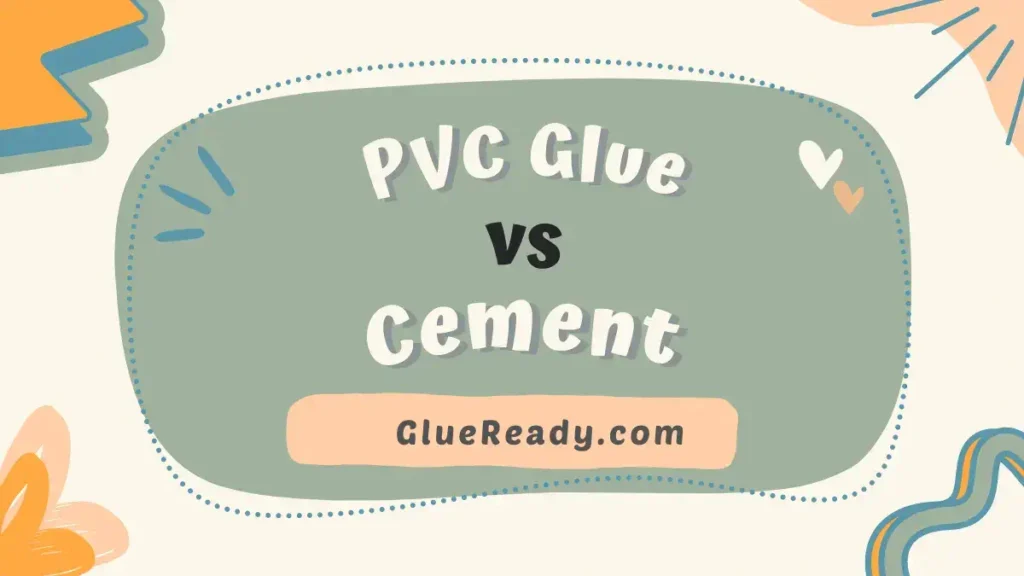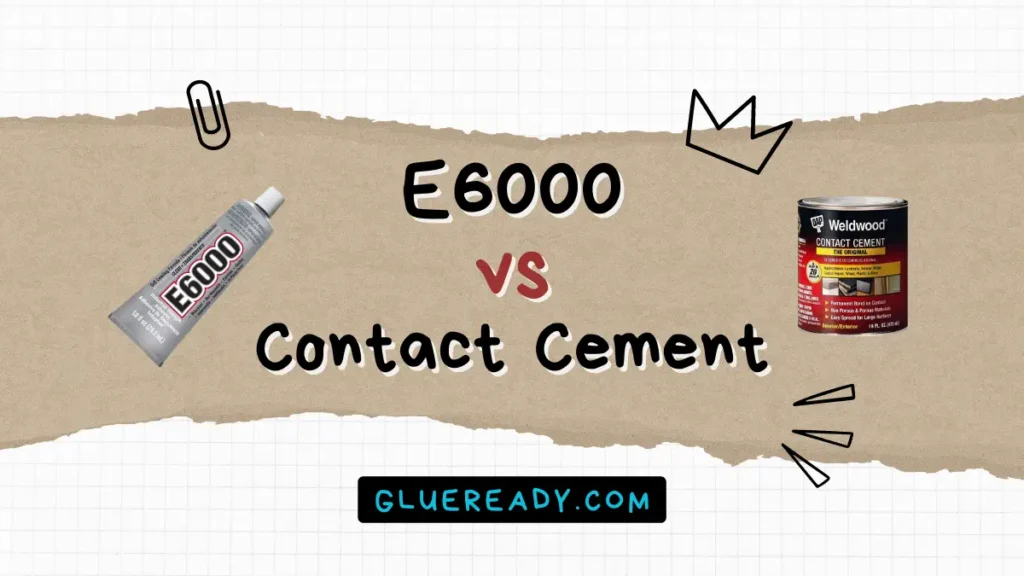E6000 vs Super Glue | Detailed Analysis

If you are looking for a strong and versatile adhesive, you might have encountered E6000 and super glue. These glues are popular and widely used for various purposes, from crafts to repairs.
A long-lasting bond can be achieved with E6000 due to its exceptional strength, flexibility, and durability. Fast and strong bonding is possible with super glue, but it is not as durable and flexible as E6000.
In this article, I will compare and contrast E6000 vs Super Glue in order to help you decide which one is the best.
Know More: E6000 vs Shoe Goo
Overview of E6000 Adhesive
E6000 is a polyurethane adhesive that comes in a tube. It is a self-leveling glue that can bond to many different materials, such as wood, metal, glass, ceramic, leather, rubber, vinyl, plastic, and more.
E6000 is flexible, waterproof, paintable, and resistant to chemicals and temperature changes. It also dries clear and does not yellow over time.
E6000 is ideal for projects that require a strong and durable bond, such as jewelry making, woodworking, home improvement, automotive repair, and more.

Overview of Super Glue
Super glue is a cyanoacrylate adhesive that comes in a bottle or a tube. It is a fast-acting glue that can bond to many different materials, such as metal, plastic, leather, ceramic, rubber, paper, and more.
Super glue is non-flammable, easy to use, and does not require any mixing or clamping. It also dries clear and does not shrink or expand.
Super glue is ideal for projects that require a quick and precise bond, such as model making, paper crafting, minor repairs, and more.

E6000 vs Super Glue Comparison Table
| Property | E6000 | Super Glue |
| Type | Polyurethane adhesive | Cyanoacrylate adhesive |
| Drying time | 5 minutes | 2-3 minutes |
| Curing time | 24-72 hours | 24 hours |
| Flexibility | High flexible than Super Glue | Low |
| Gap filling | Good | Poor |
| Material compatibility | Very good | Good |
| Odor | Strong | Mild |
| Water resistance | High | Low |
| Heat resistance | High | Low |
| Paint-ability | Yes | No |
| Shear Strength | 7000 psi (approximately 48.2 MPa) | 4000 psi (about 27.5 MPa) |
Detailed Comparison Between E6000 and Super Glue
E6000 and super glue are both strong adhesives that can bond to many different materials, but they have some differences and similarities. Here’s a detailed comparison between E6000 and super glue:
Strength and Durability
E6000 is known for its exceptional strength and durability. A strong bond is formed by it that can withstand impacts, vibrations, and temperature changes. It is also suitable for applications that require a long-lasting and robust bond.
Super glue also provides a strong bond, but it may not be as durable over time. It can become brittle and may not tolerate heavy loads or extreme flexing, as well as E6000.
Flexibility
E6000 is formulated to remain flexible once cured. It can tolerate movement and is suitable for bonding materials with different expansion rates.
Super glue dries to a hard and rigid finish, lacking the same level of flexibility as E6000.
Application
E6000 is a thick, viscous adhesive that works well for bonding porous and non-porous materials.
It can be used on a wide range of surfaces, including metal, glass, wood, ceramics, fabric, and more.
Super glue is a thin, fast-drying adhesive that is suitable for bonding smooth and non-porous surfaces like plastic, metal, and glass.
Drying Time
E6000 has a longer drying time compared to super glue. It typically takes several hours to reach the initial cure and may require up to 24-72 hours for full cure and maximum strength.
Super glue is known for its quick-drying properties. It usually sets within seconds to a few minutes, depending on the specific formulation.
Odor
E6000 has a strong odor, which can be quite noticeable and potentially unpleasant.
Super glue also has a distinctive smell, but it is generally less pungent than E6000.
Best Applications
E6000 is commonly used for various applications, including jewelry making, shoe repair, automotive projects, fabric bonding, and general crafts. It is suitable for projects that require strength, flexibility, and durability.
Super glue is popular for quick fixes, small repairs, and bonding tight-fitting parts together. It is well-suited for applications that require instant bonding on smooth surfaces.
Read More: How To Use E6000 Glue on Wood?
How to Choose Between E6000 and Super Glue?
To choose between E6000 and super glue, you can follow these steps:
Identify the type of materials you want to bond. E6000 works well on wood, metal, glass, ceramic, leather, rubber, vinyl, plastic, and more. Super glue works well on metal, plastic, leather, ceramic, rubber, paper, and more.
Consider the strength and flexibility you need for the bond. E6000 is stronger and more flexible than super glue. It can withstand higher temperatures and UV rays better than super glue. Super glue is more brittle and rigid than E6000.
Think about the drying and curing time you have for the project. E6000 takes 5 minutes to dry and 24-72 hours to cure. Super glue takes 2-3 minutes to dry and 24 hours to cure. Super glue is faster to set and cure than E6000.
Check the odor and toxicity of the glue. E6000 has a strong odor and is toxic. It requires ventilation and gloves when using it. Super glue has a mild odor and is less toxic. It does not require ventilation or gloves, but it can irritate skin or eyes if contacted.
Decide if you need to paint or sand the glued area. E6000 is paintable and sandable. Super glue is not paintable or sandable.
Frequently Asked Questions About E6000 and Super Glue
Is E6000 Glue the Same as Super Glue?
No, E6000 glue is not the same as super glue. They differ in types, formulas, properties, and applications. E6000 is a polyurethane adhesive that is more flexible, versatile, and durable than super glue. Cyanoacrylate adhesives like Super glue are faster, easier, and clearer than E6000.
What Glue Is Stronger Than Super Glue?
Epoxy is stronger than super glue. It has more shear strength and integrity than super glue.
Is E6000 Stronger Than Super Glue?
Yes, E6000 is stronger than super glue in terms of tensile strength and shore hardness. It can also withstand higher temperatures and UV rays better than super glue.
What Will E6000 Not Stick To?
E6000 will not stick to polystyrene, polyethylene, or polypropylene plastics.
Final Thoughts
E6000 and super glue are both powerful adhesives that can help you with various projects. However, their properties and applications make them suitable for different situations.
By knowing the differences and similarities between E6000 vs Super Glue, you can choose the best one based on your project needs.
Remember always to follow the instructions and safety precautions of each glue, and enjoy your crafting or repairing!







